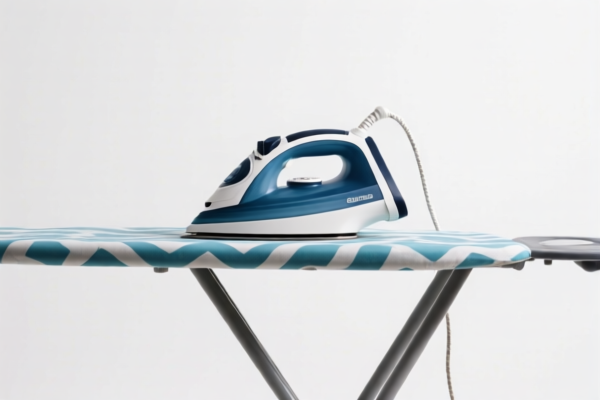| HS Code | Official Doc | Tariff Rate | Origin | Destination | Effective Date |
|---|---|---|---|---|---|
| 8468801000 | Doc | 57.9% | CN | US | 2025-05-12 |
| 8543708000 | Doc | 55.0% | CN | US | 2025-05-12 |
| 8543906800 | Doc | 55.0% | CN | US | 2025-05-12 |
| 7321811000 | Doc | 57.9% | CN | US | 2025-05-12 |
| 7321815000 | Doc | 62.5% | CN | US | 2025-05-12 |
| 7326908688 | Doc | 82.9% | CN | US | 2025-05-12 |
| 7326908676 | Doc | 82.9% | CN | US | 2025-05-12 |
| 7419805050 | Doc | 55.0% | CN | US | 2025-05-12 |
| 7419800900 | Doc | 58.0% | CN | US | 2025-05-12 |
| 8206000000 | Doc | The rate of duty applicable to that article in the set subject t+30.0% | CN | US | 2025-05-12 |




Soldering Iron
A soldering iron is a hand tool used for joining two or more metal items using solder. It provides concentrated heat locally, allowing the solder to melt and flow into the join, creating a permanent bond.
Material
Soldering irons consist of several key components:
- Heating Element: Typically resistive heating coils made of alloys like nichrome.
- Tip: Usually made of copper, often plated with chrome or other materials for corrosion resistance and improved heat transfer. Tip shapes vary widely (see Common Types).
- Handle: Insulated plastic or rubber for safe handling.
- Barrel/Body: Metal casing protecting the heating element and providing a mounting point for the handle.
- Power Supply: Can be corded electric, or cordless with rechargeable batteries. Some advanced models use induction heating.
Purpose
The primary purpose of a soldering iron is to create a reliable electrical connection between components. Beyond electronics, soldering is used in:
- Plumbing: Joining copper pipes.
- Jewelry Making: Assembling and repairing jewelry.
- Stained Glass: Joining pieces of glass with solder.
- Model Building: Connecting metal parts.
Function
Soldering irons function by:
- Heat Transfer: The heating element generates heat, which is conducted through the tip.
- Melting Solder: The heated tip is applied to the joint area and the solder. The heat melts the solder.
- Wetting: Molten solder flows into the joint due to capillary action, adhering to the metal surfaces. This "wetting" action is crucial for a strong bond.
- Solidification: As the solder cools, it solidifies, creating a permanent electrical and mechanical connection. Flux is used to clean the metal surfaces and promote wetting.
Usage Scenarios
- Electronics Repair: Fixing broken circuits, replacing components on printed circuit boards (PCBs).
- Electronics Assembly: Building new electronic devices.
- DIY Projects: Creating custom electronic gadgets.
- Prototyping: Quickly creating temporary connections for testing circuits.
- Hobbyist Work: Model railroading, robotics, etc.
Common Types
- Traditional Electric Soldering Irons: Most common type, plug into a wall outlet. Variable temperature models are widely available.
- Temperature-Controlled Soldering Stations: Provide precise temperature control, often with digital displays and feedback loops. More expensive, but offer better control and consistency.
- Cordless Soldering Irons: Powered by rechargeable batteries, offering portability. May have limited run time.
- SMD Rework Stations: Designed for surface mount device (SMD) soldering, often with hot air and infrared capabilities.
- Chip Soldering Irons: Specialized for soldering and desoldering integrated circuits (ICs).
- Tip Variations: Conical, chisel, knife, fine-point, and various specialized tips for different applications. Tip shape impacts heat concentration and precision.
Soldering irons are machinery and apparatus for soldering, brazing or welding. They are often hand-directed or -controlled.
Here are the relevant HS codes based on the provided reference material:
- 8468801000: Machinery and apparatus for soldering, brazing or welding, whether or not capable of cutting, other than those of heading 8515; gas-operated surface tempering machines and appliances; parts thereof: Other machinery and apparatus: Hand-directed or -controlled.
- 84: Chapter 84 covers nuclear reactors, boilers, machinery and mechanical appliances; parts thereof.
- 68: Heading 8468 specifically covers machinery for soldering, brazing or welding.
- 80: Subheading 846880 covers other machinery and apparatus within this category.
- 10: Subheading 8468801000 specifically refers to hand-directed or -controlled machinery.
- Tax Details: This HS code has a base tariff of 2.9%, a surcharge of 25.0%, and a surcharge of 30.0% after April 2, 2025, resulting in a total tariff of 57.9%.
Regarding HS code 8468801000, it is important to note that this classification covers soldering apparatus that are not capable of cutting and are not covered under heading 8515.
Customer Reviews
No reviews yet.